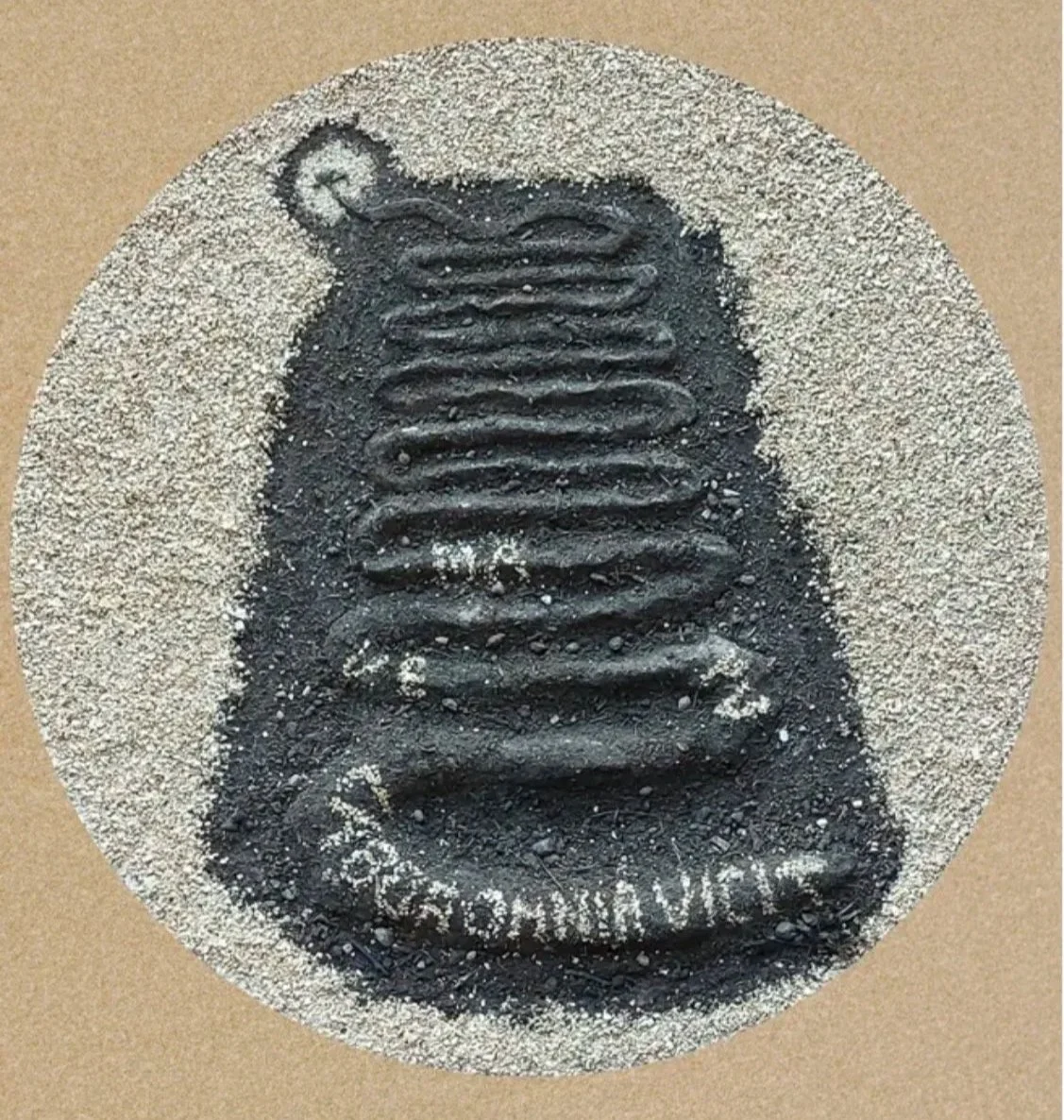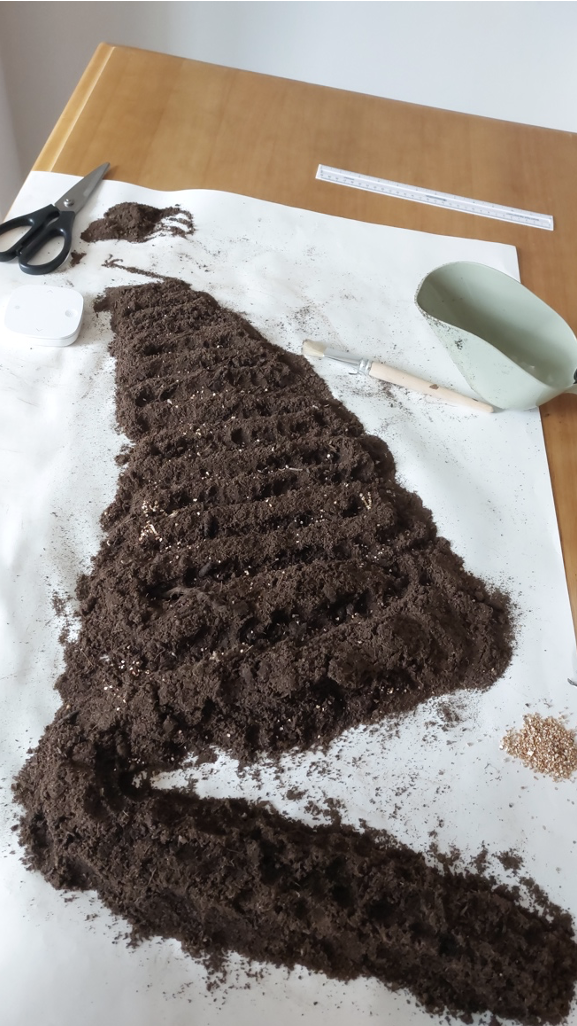Writing poetry is like ploughing the field, and an installation
Likely, an Irishman left for continental Europe in the seventh century. Looking to exercise his profession of scribe, he got his hands on a copy of the Etymologiae ('Etymologies'), a work written by Isidore of Seville not long before, and went on to make his own. We know this because his manuscript made it to the Abbey of St Gall, in Switzerland: recently rediscovered, it is currently back in Ireland as part of the ‘Words of the Wave’ exhibition at the National Museum, Kildare St, until 24 October 2025. To be sure, time has allowed us to have no more than a fragment. In his transcribing, if and when he worked on Book 5, Section 14, Paragraph 7, this is what he read:
'Verses' (uersus) commonly receive this name because the ancients used to write resembling the way soil is ploughed: they would start by moving the stylus from left to right, and then would make a curve onto the verse below, and finally guide the next verse to the right again. This (uersus) is what farmers to this day call furrows.
How do you prove what Isidore says? The English word 'verse', for instance, ultimately comes from Latin uersus, which means 'a turn', or specifically 'a turn of the plough', because uersus is a form of the verb uertere, 'to turn' or, of course, 'to plough'. This simple etymology betrays deeper historical and linguistic truths one could explore. The Spaniard's suggestion is credible. Still, if Latin isn't enough for you, then get familiar with the Greeks, who thought in the same way. At a certain point in their history, they practised a style of writing they decided to name boustrophedon. Now, take the two most important parts of this word: bous means 'ox', and strophe, lo and behold, 'a turn'! The images below depict a boustrophedon from Greece, where its use was frequent up to the 5th century BCE (Fig. 1), and one from Rome (Fig. 2), where the few and old examples are likely due to external influence from other writing systems. Follow a letter and see how it changes directions:
Fig. 1: Inscription from Gortyn, Crete, 5th century BCE (Wikimedia: CC BY-SA 3.0)
Fig. 2: Inscription in the Roman Forum, Rome, c. 500 BCE (stone rubbing from J. E. Sandys’ A Companion to Latin Studies (Cambridge, 1913), p. 732, plate 107 (public domain).
Agriculture is older than writing. It doesn't take an anthropologist, so I hope, to understand that humans may view and describe new technologies using what they are already familiar with: just as, for example, we still say 'write' when really we 'type'; rather, when we 'press buttons on a computer'. Greeks and Latins were very good with the plough before they took up the stylus.
What I am trying to get at, however, is not just an anthropological, consequential fact. It is an artistic phenomenon, and poetic. Farming and poetry: here are two things that have held some sort of relationship. Music must have been an important part of the farming world, possibly to ease labour or to transmit practical knowledge, while agriculture itself penetrated the world of poetry. On this, we will benefit from hearing what a poet has to say:
quid faciat laetas segetes, quo sidere terram
uertere...
What makes crops happy, under which star the earth
to turn..
So Roman poet Virgil begins singing his Georgics, a title that means something like 'The Agriculturals' or 'Agricultural Songs'. Interestingly, he places the word uertere right at 'the turn' of the line. You might think this is not picking up on those agricultural metaphors about writing. I do. I find the choice of word very suggestive for the first 'turn of line' of the whole poem. But let us skip to more general reflections, lest we lose irretrievable time sailing around details.
Have you given thought to the fact that this Roman chose agriculture, a dry and technical subject by nature, as a topic for poetry? Here are the elements of the poem. In the beginning, a didactic voice, really the persona of a teacher-poet, promises to sing about crops and fields, arboriculture, livestock, and beekeeping. But then you go on to discover that the Georgics are densely populated by comments, masked hints, and all-out digressions on a large number of themes such as love and hate, war and peace, country and city, life and death, and, of course, poetry.
You soon start to doubt whether this didactic poem is really meant for teaching agriculture, and you struggle to make sense and system of the relationship between the best types of soil for vines and the idea that human and non-human life is all-encompassing, insatiable toil. You can't learn proper farming from the Georgics, modern farmers and farming experts have concluded. And yet the poem is, after all, about agriculture. Is it not? If you say it isn't, then you are telling Virgil he could have chosen any other technical subject, such as gastronomy, toxicology, or even, say, Epicureanism, to convey his 'abstract reflections' without any loss in meaning. Nonsense – please know that I say this not to you, but to any scholars who have gone too long without someone telling them: 'nonsense!'. In Virgil's poetic world, farming is a far-reaching poetic thought. Farming, so it seems, is powerful in what it is and in the mental pathways it can lead you on. It is something poetry can extensively explore the beauty and terror of.
The only thing left to unveil would be what the poem means. For that, I wish you good luck. Well, all of us readers need luck and inspiration. To understand the question if not the answer.
Every year in the Trinity Long Room Hub, its Early Career Researchers make a poster related to our respective dissertations for public engagement. Seeing that I study the Georgics, my idea was to convey the relationship between farming and poetry that Virgil explored, and I chose the ploughing-writing metaphor as a way to represent it. Having a clear mental image of what it should look like, I found no reason not to use dirt and clay to make the poster, or rather an installation, with my own hands; in my motivation to do so, there was also a weighty factor of me finding no way to digitally design what I intended. This was the earliest stage of a ploughed field (Fig. 3 below).
And below is the final result, as seen on the postcard our projects are turned into (Fig. 4). [1] The writing element comes in as a quotation of a famous passage from the Georgics: labor omnia uicit ('toil dominated everything'). You can also spot the syllables MA-VE-PV, which correspond to an acrostic of the poet's initials found in the poem: MAro VErgilius PVblius. Up in the distance, one of the ploughed ridges transforms into the small figure of a farmer.
It is framed and displayed on the 3rd floor of the Trinity Long Room Hub along with all the other posters; they have also been published on the institute's website. [2] My installation has fallen apart a number of times, and especially the placement of the pellets forming the letters hasn't been able to hold up well. I will fix it until toil takes over.
While I do it, I wonder what went through that Irish scribe's mind when and if he read that passage in Isidore's Etymologies, and whether he had seen such serpentine ploughing in his Ireland, and whether he then recalled any Irish song about farming, or other songs sung by Irish farmers as they laboured. Maybe he even left a note on the margin of the text, as scribes usually did. We might never know. What we do know is that just recently people were still thinking about the fertile mysteries of farming and poetry, proving that we are far from exhausting them, if that were ever the goal. So the Virgilian Seamus Heaney ends the second of his Glanmore Sonnets:
Vowels ploughed into other, opened ground,
Each verse returning like the plough turned round
[1] I thank Christina Hamilton at the TLRH, who designed the postcards and helped us find ways to make our project ideas concrete.
Miguel Andriolo is a Ph.D. candidate in the Department of Classics, Trinity College Dublin, and an Early Career Researcher in the Trinity Long Room Hub. His thesis is called 'Studies in the style of Virgil's Georgics', and he is funded by a Trinity Research Doctorate Award.





